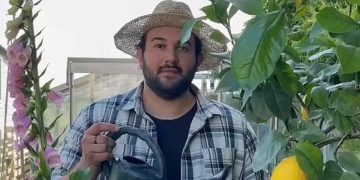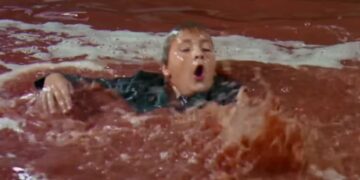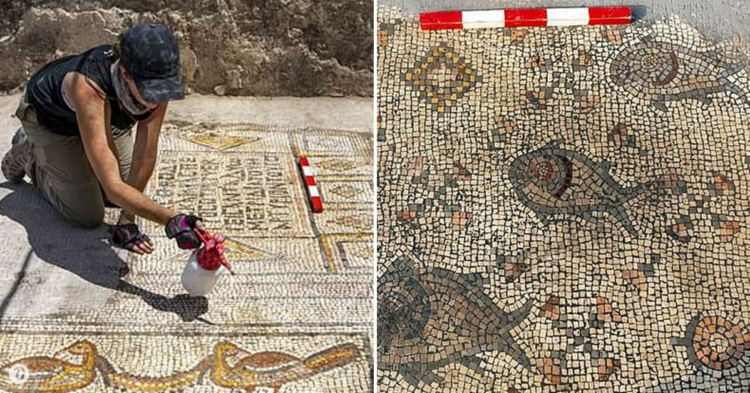Isn’t it nice when the discoveries we make relay our personal biases, perspectives, and world views directly back to us? Like when I watch seven Netflix ghost documentaries in a row and suddenly every single picture I take has a supernatural spirit in the background that is definitely there, like obviously those orbs of light have no other explanation.
Sometimes, it’s best to try and go into projects without projecting our preconceived ideas onto them. We don’t all find a picture of Pope Francis in our tea leaves, you feel me?
Despite this advice, one archaeologist is certain that his most recent discovery is a detailed depiction of a scene from the New Testament.
Haifa University’s Dr. Michael Eisenburg led the Hippos-Sussita Excavation Project as lead archaeologist.

At the Sussita National Park’s South-West or Burnt Church, his team uncovered a 1,500-year-old mosaic depicting an array of birds, fish, and various baskets of food.
Eisenberg argues that the colorful mosaic is meant to represent a miracle in the New Testament in which Jesus feeds a multitude of people with fish and loaves of bread.
The traditional site of the miracle is all the way across the sea.

Historians originally believed that the site of the miracle was at the Church of the Multiplication of the Loaves and Fish in Tabgha, which is nowhere near the excavation site.
However, an expert in mosaics of the Byzantine period who isn’t connected the excavation disagrees with Eisenberg.

Archaeologist Dr. Anat Avital explained to The Times Of Israel that so-called ‘loaves of bread’ are actually very likely fruit.
“It could only be fruit, on the size scale of apples,” she explains, “I have seen many other mosaics with almost exactly the same baskets, which usually contain fruit, sometimes flowers.”
Avital has several reasons for her stance on the mosaic.

“Another great sign and clue that the artist meant to show fruit is that you can see a pruning tool depicted beside one of the baskets,” she continues, “The mosaic’s depiction of bounty is symbolic of one of the most fundamental things in our lives, we need to eat.”
In addition, she speculates that there is nothing significant about the number of baskets depicted.

“We must understand that the people were illiterate, most of them,” she explains, “Mosaics depicted themes in a way that is easy to understand, not in clues, not like today.”
Though we’ll never truly know the original artist’s intentions, it’s important to have a plethora of perspectives on site before making hard and fast judgments.

Either way, the mosaic is still an incredible discovery.
h/t: The Times Of Israel

















































